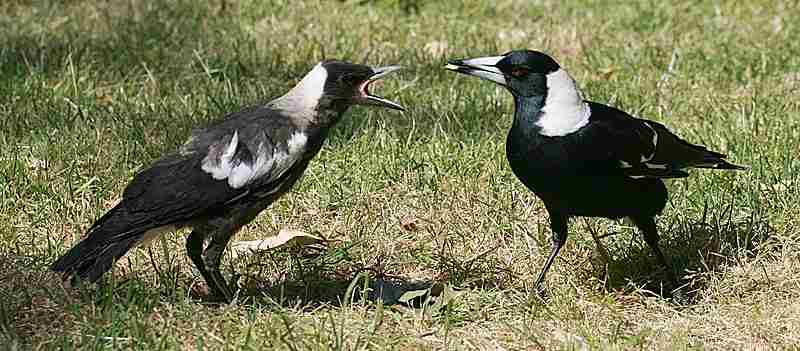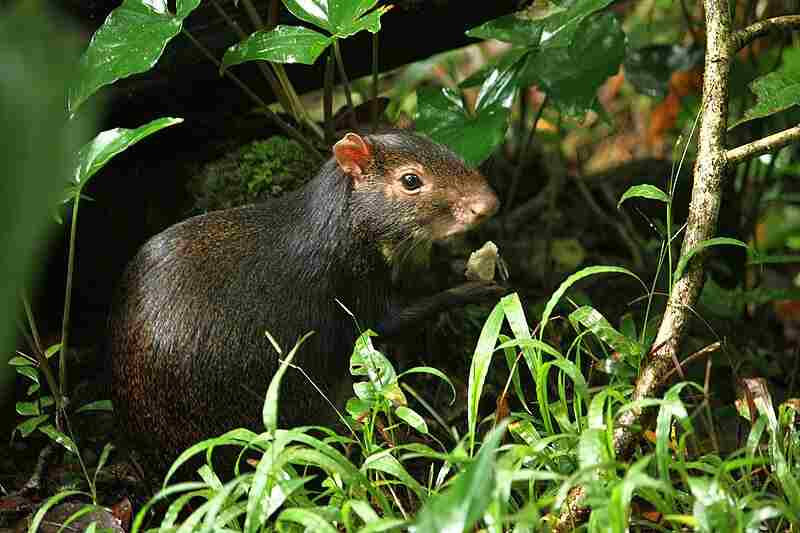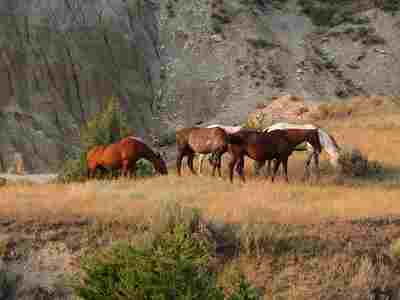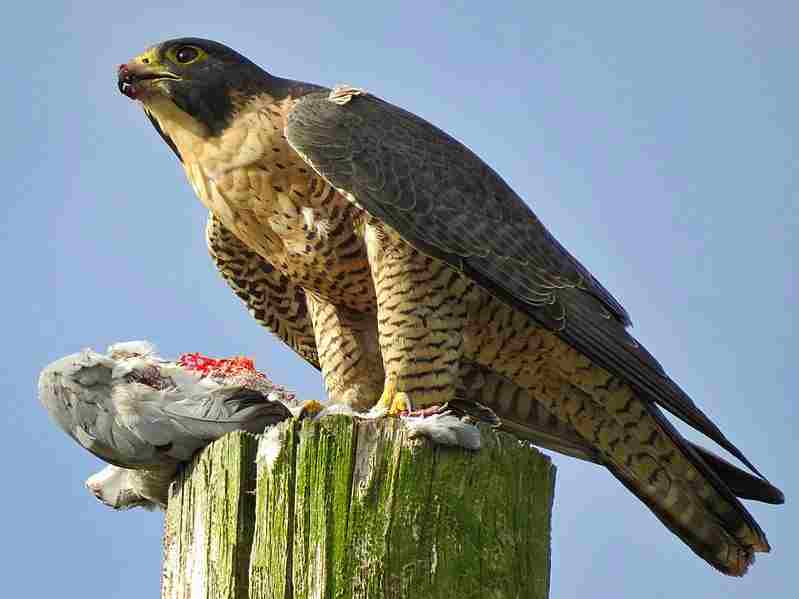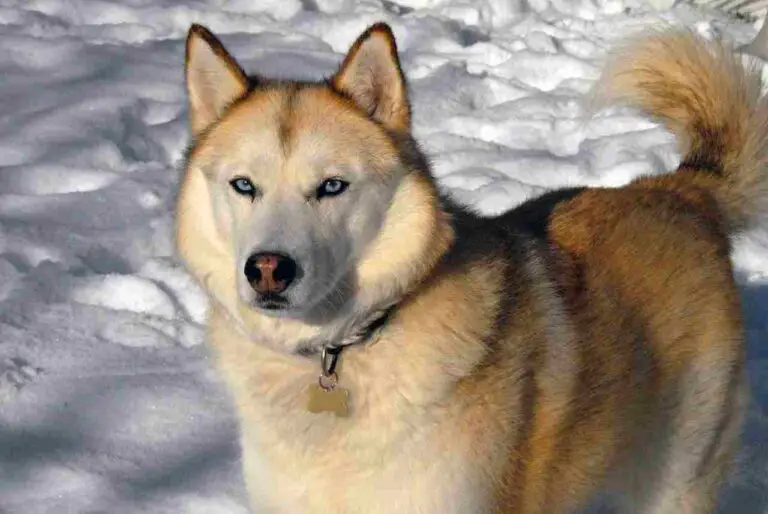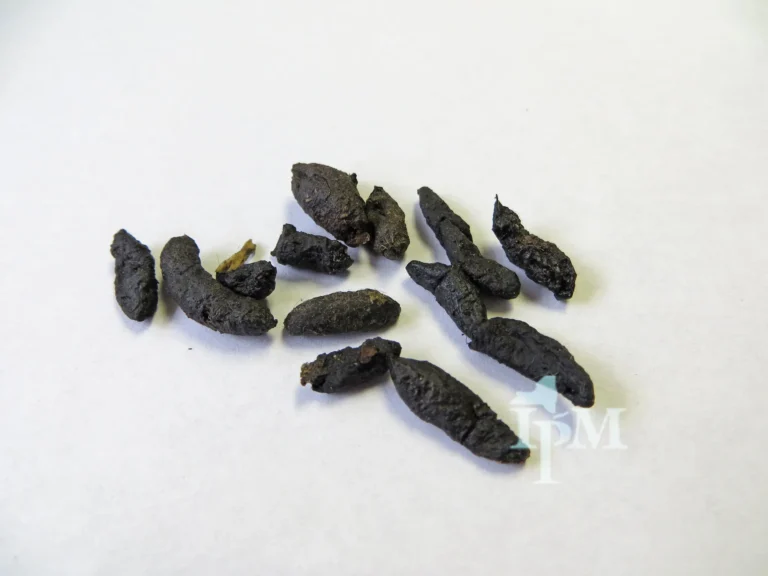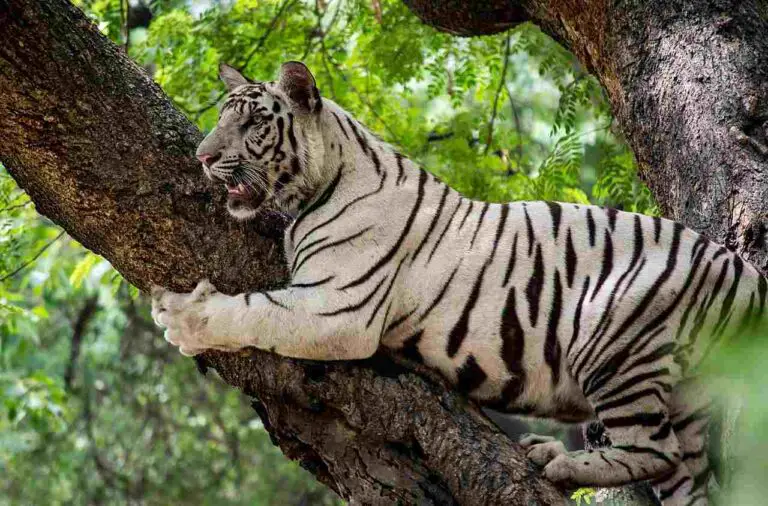5+ Biotic Factors in Grasslands and Their Characteristics Discussed
Biotic factors in grasslands are; plants, herbivorous, carnivorous and omnivorous consumers; microbes, and trophic relationships between the various organic groups.
This article discusses biotic factors in grasslands and their characteristics, as follows;
1). Grassland Plants (as one of the Biotic Factors in Grasslands)
Grassland plants are a diverse group of mostly-vascular autotrophs whose adaptations allow them thrive in grassland ecosystems, characterized by moderate rainfall and open spaces.
These plants are largely a combination of herbaceous vegetation, and have adapted to the distinctive environmental conditions occurring in grasslands, which can vary from tropical to temperate regions [5].
They play an important role in the ecosystem by providing food and microhabitat/shelter for various grassland animals, influencing species richness/biodiversity, as well as contributing to soil conservation and fertility. .
Main Groups/Categories of Grassland Plants
Grassland plants can be categorized broadly into groups like; grasses, sedges, rushes and forbs.
1. Grasses as Plants/Biotic Factors in Grasslands
Grasses (Poaceae taxonomic family) represent the most dominant group of plants that can be found in grassland biomes, and form a dense vegetative cover over the landscape.
They possess narrow and long leaves, as well as stems which are typically cylindrical and hollow. Some common examples of grasses that occur in grasslands (including prairies and savannas) are;
1. Switchgrass
2. Buffalo grass
3. Big bluestem
4. Timothy grass
5. Red fescue
6. Blue grama grass
7. Little bluestem
Grasses have generally adapted to the impact of grazing activities of herbivores, as well as fire hazards, by developing features like underground stems, rapid regeneration, and extensive root systems.
2. Forbs in the Grassland
Forbs (herbaceous, non-grass plants) are a group of herbaceous plants that differ from grasses, which grow in grassland environments.
They contribute to the diversity to grassland vegetation, as well as to overall dynamics of their habitat.
Forbs often produce vibrant flowers, and play an important role in pollinator attraction.
Examples of forbs that grow in grasslands include;
1. Goldenrods
2. Coneflowers
3. Sunflowers
4. Milkweeds
5. Clover
6. Yarrow
Forbs provide both pollen and nectar for butterflies and bees among other nectar and pollen-feeders, thereby supporting the process of pollination, and the wellbeing of the entire grassland ecosystem.
3. Sedges as Plants/Biotic Factors in the Grasslands
Sedges (Cyperaceae taxonomic family) are a group of grass-like plants which often grow in relatively-humid areas within grasslands, such as meadows and marshes [11].
Features of sedges include preference for moist soil, and polygonal stem morphology.
Examples of sedges that grow in grasslands include;
1. Tussock sedge
2. Fox sedge
3. Carex plants (like the Carex Divulsa specie [12])
4. Three-way sedge
Sedges contribute significantly to diversity of grassland ecosystems, and provides both food and habitat for native wildlife.
4. Rushes as Plants in the Grassland
Rushes (Juncaceae taxonomic family) are a group of herbaceous plants which bear significant resemblance to grasses and sedges, but are classified under a separate family [14].
They commonly occur in wetland zones within the grassland, and possess hollow, round stems. Examples of rushes found in grasslands include;
1. Hard rush
2. Needle rush
3. Soft rush
4. Bulrush
Rushes are crucial for stabilizing wetland habitats in the grassland, as well as providing food and vegetative cover for wetland-dwelling organisms.
Summary of Importance of Grassland Plants
Grassland plants are critical for maintaining the functioning, and balance, of their habitats.
They provide microhabitat and food for a wide range of organisms, including birds, small mammals, and large grazers like antelope and bison.
In addition, grassland plants play a role in preventing soil erosion, by binding soil particles with their roots, while contributing to nutrient-cycling, and exerting influence over the total productivity of the ecosystem.
2). Grassland Herbivorous Consumers
Grassland herbivorous consumers are animals that mainly consume plants that grow in the grassland.
They have a vital role to play in nutrient-cycling and energy transfer, in the grassland food chain/web.
Herbivores that occur in grasslands, have developed adaptive features which enable the to feed on various parts of herbaceous plants, and to extract nutrients from these plant materials in their digestive tracts.
Grassland herbivorous consumers can be categorized broadly categorized into grazers, mixed feeders and browsers.
1. Grazers as Animals/Biotic Factors in Grasslands
Grazers are herbivores that feed mainly on grasses.
As a result of evolution, these animals are able to efficiently digest and process fibrous materials and other complex organic constituents of their plant diet.
Grazers are equipped with specialized dentition and jaws that enable them graze close to the ground, efficiently severing and ingesting tough grass leaves and stems.
Examples of Grazers in the Grassland Ecosystem
Some examples of grazers in the grassland are: wildebeest, zebra, and American bison.
Wildebeests are large ungulates (antelopes) of the genus Connochaetes [7] that exhibit migratory behavior, and can be found in grassland areas, where they move in herds, searching for suitable grazing grounds. They are able, as a result of adaptation; to feed on a variety of grasses in their habitat.
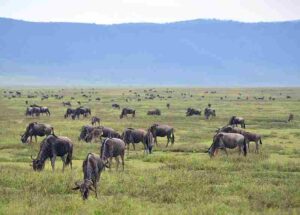
Zebra are often found within the same geographic zone as wildebeest, and can be described as equids that feed mainly on grasses [13]. The dentition and digestive system of these animals are adapted for efficient processing of fibrous grass materials.
Bison are a group of large herbivorous mammals that mainly graze on grasses. Their features include have a muscular, powerful build, and digestive adaptations them to graze on tough, grass fibers.
2. Browsers as Herbivorous Consumers/Biotic Factors in Grassland
Browsers can be described as herbivores that feed mainly on the twigs, shoots and leaves, of trees and shrubs.
Gasses may do not constitute a major part of their diet, as browsers have evolved to rely on other types of vegetation.
Some examples of browsers in grassland ecosystems are; kudu and giraffe.
Kudu is an antelope that is characterized by specialized teeth and elongated snouts, for browsing on shoots and leaves of trees and shrubs. It commonly occurs in savanna areas.
Giraffes are also browsers, which possess specialized dentition, tongues and elongate necks that enable them reach high branches of trees and consume leaves. They are highly-adapted to this feeding pattern of browsing on trees, in their habitats.
3. Mixed Feeders
Mixed feeders in the grassland, are herbivores which consume a variety of vegetation types, including fobs, highly-positioned leaves and shoots, and grasses.
These animals are generally adaptable, and can slightly-alter their feeding behavior to align with available plant resources.
Some examples of mixed feeders in the grassland ecosystem are; white-tailed deer and impala.
White-tailed deer are adaptable herbivorous mammals that feed on various kinds of vegetation, including forbs, tree/shrub leaves, and grasses.
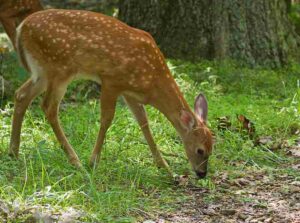
Impalas are antelopes which have evolved mixed feeding habits.
They can be found consuming grasses in the dry season, and may switch to shoots and leaves of trees and shrubs, when the availability of grasses is low.
Importance of Herbivorous Consumers in the Grassland
Herbivorous consumers play an important role in the grassland ecosystem, by helping control plant structure and growth, as well as promoting plant diversity through browsing and grazing.
They contribute to the recycling of nutrients by enriching soil with their feces. Also, herbivores are as a food source for higher predatory consumers.
List of Herbivorous Consumers in the Grassland
Herbivorous consumers in the grassland include;
1. Wildebeest
2. Giraffe
3. Zebra
4. Impala
5. Bison
Herbivorous Consumers in the African Savannah
Examples of herbivorous consumers in the African savanna (which is a type of grassland) are;
1. Gazelles
2. Elephants
3. Warthogs
Herbivorous Consumers in the Serengeti
The Serengeti is a grassland ecosystem that occurs in East Africa [15].
Some examples of herbivorous consumers in the Serengeti are;
1. Wildebeest
2. Zebras
3. Buffalos
4. Thompson's gazelles
3). Grassland Carnivorous Consumers (as one of the Biotic Factors in Grasslands)
Grassland carnivorous consumers are predatory animals that derive energy and nutrients by feeding on other animals in the grassland.
They have a critical role to play in the regulation of prey populations, transfer of bioenergy and maintenance of ecological balance.
Main Categories of Carnivorous Consumers in the Grassland
Carnivores in the grassland can be categorized into various groups on the basis of their prey preferences and hunting strategies.
The main categories of carnivorous consumers in grasslands are; insectivores, scavengers, apex predators, and secondary predators/consumers.
1. Insectivores in the Grassland Biome
Insectivore are carnivorous consumers that feed mainly on insects, alongside other invertebrates.
They play an important role in controlling the populations of insects, and maintaining the ecological balance of grasslands.
Examples of insectivores in grasslands are; anteater and secretary bird.
Anteaters are mammals that possess specialized adaptations to enable them prey on termites and ants, such as strong claws and long tongues [1]. They may occur in grasslands, especially in parts where there is an abundance of termite mounds.
Secretary birds are not strictly insectivorous, but are versatile in their predatory choices and can consume reptiles, amphibians, small mammals and worms alongside insects.
They are mentioned here for being one of the prominent consumers of insects in the grassland.
Features of secretary birds include sharp beaks and long legs, which enable them hunt, capture and consume their prey.
2. Scavengers in the Grassland
Scavengers constitute one of the important biotic factors in grasslands, by reason of their contribution to sustainability in this biome.
They can be described as carnivorous consumers which consume the organic of dead animals.
Scavengers play a crucial role in the recycling of nutrients, and removal of harmful pathogens from the environment.
Some scavengers in grassland ecosystems are; jackals and vultures.
Jackals are opportunistic omnivores that can consume animal remains from the kills of other predators [9]. Through their activities, jackals help minimize the spread of pathogenic diseases that are associated with decaying organic matter, in their habitat.
Vultures are large scavenging birds that are geographically versatile, and survive by their ability to locate and consume carrion. Evolutionary characteristics of vultures include a strong sense of smell, and keen eyesight that enable them locate carcasses from significant distances.
3. Apex Predators as Carnivorous Consumers/Biotic Factors in Grasslands
Apex predators occupy the topmost level of the hierarchy of carnivores, in the grassland; so that they are less vulnerable to predation themselves.
These organisms usually play a major role in controlling the population of both herbivores and lower predators; and thereby influencing the overall structure of the ecosystem.
Some examples of apex predators in the grassland are; gray wolf and African lion.
Gray wolves can be found grassland regions of Eurasia and North America. They are dominant, social predators that hunt in groups (called packs) and target mainly ungulates like elk and deer.
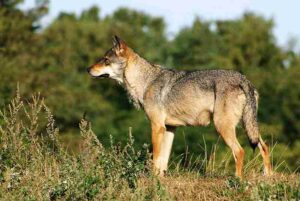
African Lion is an iconic apex predator that can be found in grassland habitats on the African continent.
It preys mainly on large herbivores like zebras; buffalos and wildebeests.
4. Secondary Predators in the Grassland
Secondary predators are carnivores that occupy a lower trophic level than the apex predators.
They may either scavenge on carrion, or hunt smaller prey species.
Examples of secondary predators in the grassland are; African wild dog and cheetah.
African wild dog, also referred to as painted dogs [2], are social, predatory canids. They carry out cooperative hunting, and primarily prey on small ungulates including some species of antelopes.
Cheetahs are secondary predators known for their incredible speed, which enable them to capture prey like impalas and gazelles.
Summary of Carnivores in the Grassland
Carnivores in grasslands include; cheetahs, African lions, gray wolves, African wild dogs, jackals, vultures, and secretary birds.
4). Grassland Omnivorous Consumers
Grassland omnivorous consumers are animals that have a flexible and versatile diet, which consists of both animal and plant matter.
These animals usually possess adaptive features that enable them consume a (relatively) wide variety of food sources, so that they can be described a versatile consumers in their habitat.
Omnivores play a vital role in the ecosystem through their contributions to ecological balance and nutrient cycling.
Categories and Examples of Omnivorous Consumers in the Grassland Biome
The main categories and examples of grassland omnivorous consumers are; birds, small mammals, reptiles, and invertebrates.
1. Birds as Omnivorous Consumers/Biotic Factors in Grasslands
Magpie and American crow are two examples of grassland omnivorous consumers, which are also birds.
Magpies have a flexible diet consisting of small vertebrates, grains, eggs, insects and fruits among others. They belong to the crow family and can also be found in forest-margin habitats, and meadows.
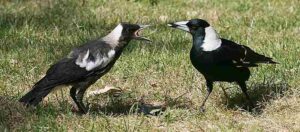
American crows are opportunistic and omnivorous birds which consume a wide range of food materials, including seeds, fruits, small mammals, carrion and insects.
1. Small Omnivorous Mammals in Grasslands
Examples of small omnivorous mammals that constitute part of the biotic factors in grasslands, are rabbits and prairie dogs.
Both mammals are rodents, with several similar physiological and behavioral characteristics.
While they are mostly herbivorous, on some occasions both rabbits and prairie dogs can feed on non-plant materials like insects. Yet because their diet is overwhelmingly herbivorous, they are not widely considered part of the omnivore community in any biome.
2. Reptiles
Examples of omnivorous reptiles in the grassland are; western fence lizard, and skink.
These reptiles occur in grasslands among other habitats such as moist woodlands, and urban gardens. Their diet consists of fruits, arachnids, mollusks, insects, and leaf litter.
3. Omnivorous Invertebrates in Grasslands
Invertebrates with omnivorous habits in the grassland ecosystem include some species of beetles, and ants.
Many species of beetles are opportunistic, omnivorous feeders, which consume both plant matter, and small invertebrates.
Also, some ant species are omnivores, mostly due to their tendency to scavenge o. both plant material and animal organic matter. They may also be involved in mutualistic relationships with some plants, whereby they participate in seed dispersal, while obtaining food in the form of nectar and other plant-derived materials.
Summary on Omnivores as Biotic Factors in Grasslands
Omnivorous consumers play a role in the grassland ecosystem by feeding on diverse food sources.
Their flexible diets enable them adapt to varying conditions, while utilizing available resources.
By consuming both animal and plant matter, omnivores contribute to the nutrient cycling within the grassland ecosystem.
They also contribute to seed dispersal and pollination, which aids in the continuity of plant species through reproduction.
Lastly, as intermediate consumers in the food chain/energy pyramid, they help to maintain the balance of organic populations of both animal and plant species in the grassland.
5). Grassland Microbes (as one of the Biotic Factors in Grasslands)
Grassland ecosystems play host to diverse microbes, which play critical roles in the recycling of nutrients, as well as soil conservation, and overall sustenance of the ecosystem.
Among the various microbe species in grasslands, one of the most abundant, diverse and dominant groups are bacteria.
These microbes perform different functions that are vital to the productivity of grassland biomes.
Main Categories and Examples of Bacteria (Microbes) in Grasslands
The main categories and examples of bacteria that can be found in grasslands include; general decomposers, nitrogen-fixing bacteria, symbiotic bacteria, cellulose-degrading bacteria, and cyanobacteria.
1. General Decomposers
These bacteria are species which have evolved mainly to break down organic remains from plants and animals in the grassland ecosystem.
Their activities facilitate the process of biodegradation, by releasing some enzymes that break down and transform complex organic compounds into simpler products; which may then be recycled back into the soil.
Examples of bacteria that are prominent for their activities as decomposers in grasslands are; Pseudomonas, Streptomyces and Bacillus [3].
2. Nitrogen-Fixing Bacteria in Grasslands
Nitrogen-fixing bacteria are very essential in grassland ecosystems, to their ability to convert atmospheric nitrogen into a form that can be utilized by plants.
These bacteria tend to form symbiotic relationships with leguminous plants, like alfalfa and clover, so that they form specialized structures referred to as nodules on the roots of these plants [10].
Examples of nitrogen-fixing bacteria in the grassland are; Aztobacter, Rhizobium, and Bradyrhizobium.
3. Symbiotic Bacteria as Microbes/Biotic Factors in Grasslands
Certain bacteria are known to form distinctive, symbiotic relationships with grassland plants, by which they aid in pathogen eradication and nutrient acquisition.
For example, some bacteria may colonize the root zone or rhizosphere of grasses, and may enhance nutrient uptake through solubilization of minerals, thereby promoting growth.
Examples of symbiotic bacteria in the grassland include Burkholderia and Azospirillum.
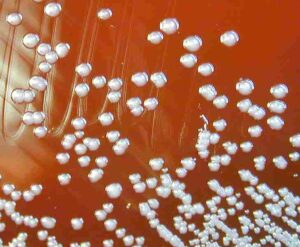
4. Cellulose-Degrading Bacteria in the Grassland
Cellulose-degrading bacteria are a group of decomposers that differ from the general decomposers in their ability to effectively breakdown cellulose; which is a complex carbohydrate that occurs in the cell walls of plants.
These bacteria secrete enzymes known as cellulases, which can break down cellulose and transform it from its complex form into simpler sugars [4].
They contribute immensely to the decomposition of plant material, making it possible for nutrients in such matter to be recycled.
Examples of cellulose-degrading bacteria in grasslands are; Ruminococcus and Cellulomonas.
5. Cyanobacteria in the Grassland Biome
Cyanobacteria are a group of photosynthetic bacteria which can fix atmospheric carbon dioxide, and produce oxygen, through photosynthesis [6].
They are vital to the carbon and oxygen cycles, and play a role in processes like carbon sequestration, in the grassland ecosystem.
Cyanobacteria may form crusts on the surface of soil semiarid grasslands, contributing to soil stabilization.
Examples of cyanobacteria are; Nostoc, Microcoleus, and Oscillatoria.
Summary on Microbes as Biotic Factors in Grasslands
Bacteria in grasslands perform various essential functions which contribute to productivity and overall health of their habitat.
They are involved nutrient cycling, so that essential elements are made available to plants and animals.
They also play a role in improving and maintaining soil fertility through decomposition of organic matter and release of nutrients.
*Trophic Interactions in the Grassland Ecosystem
Trophic relationships in the grassland ecosystem have to do with the transfer of nutrients and energy between various organisms that occupy different trophic levels.
These relationships constitute an important biotic factor in grasslands, because they determine the survival and continued existence, of all other biotic factors.
Each trophic level in the grassland represents a specific, hierarchical feeding position, beginning from primary producers, and continuing on to primary, secondary and tertiary consumers at higher trophic levels.
Overview of Trophic Levels and Relationships in the Grassland
The main trophic levels, and examples of trophic relationships in the grassland ecosystem are as follows;
1. Primary Producers in the Grassland
Primary producers in the grassland include of grasses, shrubs, trees and other herbaceous plants, and constitute the foundation or basal level, of the food chain.
These organisms are autotrophic and can transform inorganic materials like water, carbon dioxide and solar radiation, to organic matter through the process of photosynthesis.
Examples of primary producers in the grassland are; blue grama grass (Bouteloua gracilis), buffalo grass, wildflowers and prairie clover.
2. Primary Consumers (Herbivores) in the Grassland
Primary consumers, also often called herbivores; are animals which directly feed on primary producers.
They obtain their nutrients and energy by consuming materials from plants.
Some examples of herbivores in the grassland are pronghorn antelope, bison, ground squirrel, grasshopper and rabbit.
3. Secondary Consumers (Carnivores) in the Grassland
Secondary consumers can be described as carnivorous animals that mainly feed on herbivores.
This group of organisms, obtains nutrients and energy by preying on primary consumers.
Examples of secondary consumers in grasslands are foxes, snakes, owls, hawks and coyotes.
4. Tertiary Consumers (Apex Predators) as Biotic Factors in Grasslands
Tertiary consumers usually represent the apex predators in grassland ecosystems.
They are capable of preying on both herbivores and other (more vulnerable) carnivores.
Tertiary consumers have a vital role to play in the regulation of lower trophic populations; a top-down effect also known as the trophic cascade [8].
Some examples of tertiary consumers in the grasslands are pumas, large snakes, eagles, and wolves.
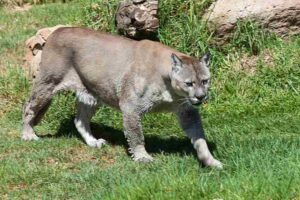
5. Decomposers in the Grassland
Decomposers are organisms that break down dead organic matter, and recycle used nutrients/minerals back into the soil.
They are critical role for the breakdown of animal and plant remains, whereby nutrients are returned to the soil for subsequent uptake by producers (plants).
Examples of decomposers in the grasslands are; fungi, bacteria, and detritivores like dung beetles and earthworms.
In the grassland ecosystem, trophic relationships are the main building blocks of complex food webs, and symbolize the intricate interactions between various organisms.
For example, plants are food sources for herbivores, which in turn are prey for the carnivores.
Apex predators help in controlling the population of herbivores, so that the ecosystem remains in equilibrium.
Also, decomposers break down organic matter, and release nutrients that can be reused by plants, thereby completing the nutrient cycle.
Trophic relationships in the grassland could be mutualistic, parasitic, or predatory. These relationships are behind important phenomena like pollination, mammalian reproduction, soil conservation, and organic growth.
Conclusion
Biotic factors in grasslands are;
1. Grassland Plants
2. Grassland Herbivorous Consumers
3. Grassland Carnivorous Consumers
4. Grassland Omnivorous Consumers
5. Grassland Microbes
... as well as Trophic Relationships
References
1). Bertassoni, A.; Costa, L. C. M. (2010). "Behavioral repertoire of giant anteater (Myrmecophaga tridactyla, Linnaeus 1758) in nature at Serra da Canastra National Park, MG and in captivity at Curitiba Zoo, PR, Brazil." Available at: http://pepsic.bvsalud.org/scielo.php?script=sci_arttext&pid=S1517-28052010000200003. (Accessed 10 July 2023).
2). Cloutier, T. L.; Packard, J. M. (2014). "Enrichment Options for African Painted Dogs (Lycaon pictus)." Zoo Biology 33(5):475-480. Available at: https://doi.org/10.1002/zoo.21155. (Accessed 10 July 2023).
3). Deacon, L.; Pryce-Miller, E. J.; Frankland, J. C.; Brainbridge, B. W.; Moore, P. D.; Robinson, C. H. (2006). "Diversity and function of decomposer fungi from a grassland soil." Soil Biology and Biochemistry 38(1):7-20. Available at: https://doi.org/10.1016/j.soilbio.2005.04.013. (Accessed 10 July 2023).
4). Dewiyanti, I.; Darmawi, D.; Muchlisin, Z. A.; Zahrial, H. T.; Arisa, I. I.; Rahmiati, R.; Destri, E. (2022). "Cellulase enzyme activity of the bacteria isolated from mangrove ecosystem in Aceh Besar and Banda Aceh." IOP Conference Series Earth and Environmental Science 951(1):012113. Available at: https://doi.org/10.1088/1755-1315/951/1/012113. (Accessed 10 July 2023).
5). Faber-Langendoen, D. (2019). "Tropical, Temperate, and Mediterranean Grasslands of the World." Reference Module in Earth Systems and Environmental Sciences. Available at: https://doi.org/10.1016/B978-0-12-409548-9.12093-7. (Accessed 10 July 2023).
6). Fay, P. (1992). "Oxygen relations of nitrogen fixation in cyanobacteria." Microbiol Rev. 1992 Jun;56(2):340-73. Available at: https://doi.org/10.1128/mr.56.2.340-373.1992. (Accessed 10 July 2023).
7). Furstenburg, D. (2013). "Focus on the Blue Wildebeest (Connochaetes taurinus)." Available at: https://www.researchgate.net/publication/316154370_Focus_on_the_Blue_Wildebeest_Connochaetes_taurinus. (Accessed 10 July 2023).
8). Heath, M.; Speirs, D. C.; Steele, J. H. (2013). "Understanding patterns and processes in models of trophic cascades." Ecology Letters 17(1). Available at: https://doi.org/10.1111/ele.12200. (Accessed 10 July 2023).
9). Kebede, Y. (2017). "A Review on: Distribution, Ecology and Status of Golden Jackal (canis aureus) in Africa." Journal of Natural Sciences Research, Vol 7, No 1 (2017). Available at: https://www.iiste.org/Journals/index.php/JNSR/article/view/35200. (Accessed 10 July 2023).
10). Lang-Unnasch, N.; Ausubel, F. M. (1985). "Nodule-specific polypeptides from effective alfalfa root nodules and from ineffective nodules lacking nitrogenase." Plant Physiol. 1985 Apr;77(4):833-9. Available at: https://doi.org/10.1104/pp.77.4.833. (Accessed 10 July 2023).
11). Mishra, S.; Tripathi, A.; Tripathi, D. K.; Chauhan, D. K. (2015). "Role of sedges (Cyperaceae) in wetlands, environmental cleaning and as food material: Possibilities and future perspectives." Plant-Environment Interaction: Responses and Approaches to Mitigate Stress (pp.327-338). Available at: https://doi.org/10.1002/9781119081005.ch18. (Accessed 10 July 2023)
12). Molina, A.; Acedo, C.; Llamas, F. (2008). "Taxonomy and new taxa of the Carex divulsa aggregate in Eurasia (section Phaestoglochin, Cyperaceae)." Botanical Journal of the Linnean Society 156(3):385 - 409. Available at: https://doi.org/10.1111/j.1095-8339.2007.00760.x. (Accessed 10 July 2023).
13). Owaga, M. L. (2008). "The feeding ecology of wildebeest and zebra in Athi-Kapiti Plains." African Journal of Ecology 13(3‐4):375 - 383. Available at: https://doi.org/10.1111/j.1365-2028.1975.tb00145.x. (Accessed 10 July 2023).
14). Plunkett, G. M.; Soltis, D. E.; Soltis, P. S.; Brooks, R. E. (1995). "Phylogenetic Relationships Between Juncaceae and Cyperaceae: Insights from rbcL Sequence Data." American Journal of Botany 82(4). Available at: https://doi.org/10.2307/2445700. (Accessed 10 July 2023).
15). Williams, E.; Ntandu, J. E.; Ficinski, P.; Vorontsova, M. (2016). "Checklist of Serengeti Ecosystem Grasses." Biodiversity Data Journal 4(4):e8286. Available at: https://doi.org/10.3897/BDJ.4.e8286. (Accessed 10 July 2023.
